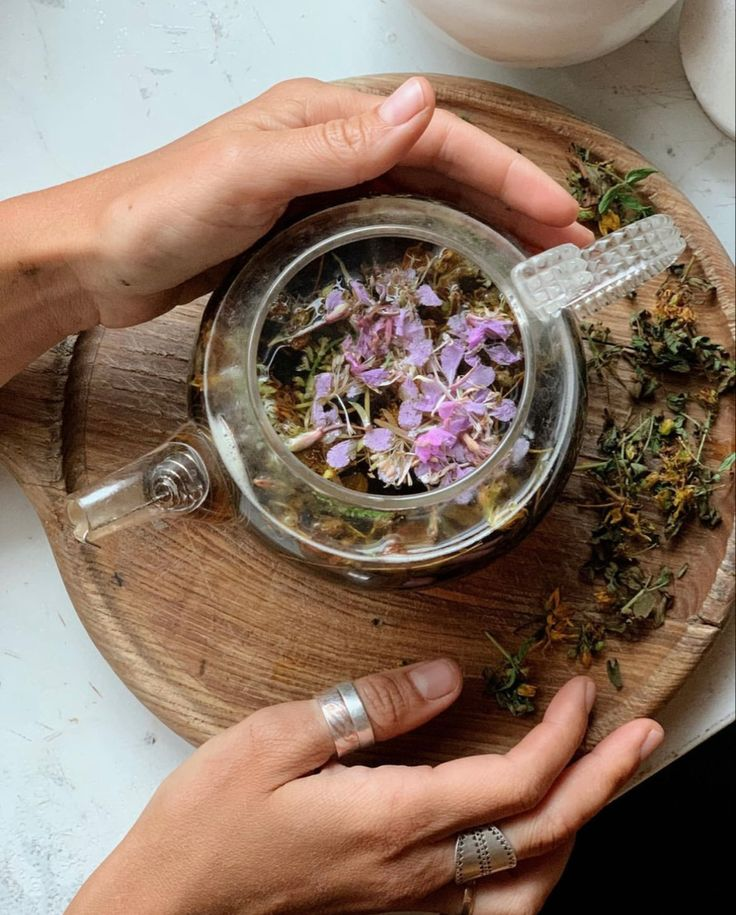As the vibrant hues of autumn gracefully give way to the frosty embrace of winter, there’s an undeniable shift in the air that encourages us to welcome the change of season. Winter is associated with shorter days and longer nights, which can contribute to a desire for more rest and relaxation. Cold weather also pairs well with hearty comfort foods, which are often rich in carbohydrates and fats, and can provide a psychological sense of warmth and satisfaction. When viewed in this way, Winter can be seen as an enjoyable period for extra rest and relaxation.
However, winter can also be a season of contrasting emotions. For some, it can be a time of introspection that gives rise to feelings of isolation and melancholy. The reduced daylight, coupled with the biting cold, can impact both our physical and emotional well-being; this can also lead to a condition known as Seasonal Affective Disorder (SAD).
What is Seasonal Affective Disorder (SAD)?
Seasonal Affective Disorder (SAD) is a type of depression that occurs at a specific time of year, typically during the fall and winter months when there is less sunlight. This condition is believed to be related to changes in light exposure and its impact on circadian rhythms and neurotransmitter levels in the brain, particularly serotonin and melatonin.
Symptoms of Seasonal Affective Disorder
Individuals with SAD experience a range of symptoms that significantly impact their mood and daily functioning.
The common symptoms of seasonal affective disorder include:
Low Energy – Feeling constantly fatigued or lacking in energy.
Changes in Sleep Patterns – Experiencing difficulty sleeping or oversleeping.
Changes in Appetite – Significant changes in appetite, often leading to weight gain or loss.
Irritability – Feeling easily irritated or having difficulty dealing with stress.
Difficulty Concentrating – Struggling with focus and concentration.
Loss of Interest – Losing interest in activities you once enjoyed.
Feelings of Hopelessness or despair – A pervasive sense of sadness or hopelessness.
Social Withdrawal – Avoiding social situations or withdrawing from friends and family.
Physical Symptoms – Some individuals may experience physical symptoms like aches or pains.
It’s important to note that these symptoms may vary in intensity and duration.
Causes of Seasonal Affective Depression
In order to understand what seasonal affective disorder is and how to manage SAD, it’s important to discover some of the root causes. That being said, here’s a list of how winter’s features can potentially contribute to seasonal depression –
Reduced sunlight exposure. Winter days are shorter, and there is less natural sunlight. Limited exposure to sunlight can disrupt the body’s internal clock (circadian rhythm) and affect the production of melatonin and serotonin, neurotransmitters that play a role in mood regulation.
Changes in circadian rhythm. The shift to shorter days and longer nights during winter can disrupt the body’s internal circadian rhythm, leading to disruptions in sleep patterns and energy levels.
Vitamin D deficiency. Reduced sunlight exposure in winter can lead to lower levels of vitamin D, which has been linked to mood disorders. Vitamin D is synthesized in the skin in response to sunlight, and inadequate levels may contribute to depressive symptoms.
Cold and inclement weather. Harsh winter weather, including cold temperatures, snow, and storms, can limit outdoor activities and make it challenging for individuals to engage in physical exercise. Regular exercise is known to have mood-enhancing effects.
Holiday-related stress. While the holiday season can be joyous, it can also bring about stress, financial pressures, and social obligations, which may contribute to increased feelings of anxiety and depression.
Social isolation. Cold weather and winter conditions may discourage outdoor activities and social interactions. Reduced social engagement can lead to feelings of loneliness and isolation, contributing to depressive symptoms.
Post-holiday letdown. After the excitement of the holiday season subsides, individuals may experience a “post-holiday letdown” characterized by a return to routine, coupled with a sense of emptiness or disappointment.
Seasonal changes in diet. Some individuals may experience changes in eating habits during winter, including increased cravings for carbohydrates. These dietary changes can influence neurotransmitter levels and energy levels, potentially contributing to mood disturbances.
Financial strain. Winter may bring additional financial burdens, such as increased heating bills and holiday expenses. Financial stress is a known contributor to depression.
Genetic predisposition. Some individuals may have a genetic predisposition to seasonal affective disorder, making them more susceptible to the impact of seasonal changes on their mental health.
It’s important to recognize these potential factors and seek support from a counseor near you if you or someone you know is experiencing symptoms of seasonal depression.
Using Holistic Techniques to cope with Seasonal Affective Depression
Holistic techniques aim to address the well-being of the whole person—mind, body, and spirit. While they may not replace professional treatment, incorporating holistic approaches to treating depression or anxiety can complement traditional interventions and help manage symptoms of seasonal depression. Here’s a list of holistic techniques that may be beneficial:
Light Therapy (Phototherapy) – Mimic natural sunlight with light therapy lamps. Exposure to bright light can regulate circadian rhythms and improve mood, making it a common holistic technique for managing seasonal affective disorder.
Mindfulness Meditation – Practice mindfulness meditation to cultivate present moment awareness. Mindfulness has been shown to reduce stress, improve mood, and enhance overall mental well-being.
Yoga – Engage in yoga, which combines physical postures, breath control, and meditation. Yoga can promote relaxation, reduce stress, and improve mood by releasing tension and enhancing the mind-body connection.
Aromatherapy – Use essential oils like lavender, chamomile, or citrus scents to create a calming atmosphere. Aromatherapy can positively influence mood and reduce stress through the olfactory system.
Regular Exercise – Incorporate regular physical activity into your routine. Exercise releases endorphins, the body’s natural mood enhancers, and can counteract the effects of reduced outdoor activity during the winter months.
Balanced Nutrition – Maintain a well-balanced diet rich in nutrients, vitamins, and minerals. Certain foods, such as those high in omega-3 fatty acids, may have mood-stabilizing effects.
Hydrotherapy – Take warm baths or showers to promote relaxation. Warm water can soothe tense muscles and create a calming effect on the nervous system.
Journaling – Express thoughts and emotions through journaling. Writing about experiences and feelings can provide clarity, self-reflection, and a sense of release.
Art and Music Therapy – Engage in creative activities such as painting, drawing, or playing a musical instrument. Creative expression can be therapeutic and provide an outlet for emotions.
Social Connection – Foster meaningful connections with friends and family. Social support is crucial for mental well-being, and maintaining relationships can provide a sense of belonging and emotional support.
Herbal Supplements – Explore herbal remedies, such as St. John’s Wort or valerian root, under the guidance of a healthcare professional. Some herbs are believed to have mood-enhancing properties.
Acupuncture – Consider acupuncture, a traditional Chinese medicine technique that involves inserting thin needles into specific points on the body. Some people find it helpful for managing stress and improving mood. We love recommending Elevate Wellness St. Pete for locals in the Tampa Bay Area.
Breathing Exercises – Practice deep breathing exercises to promote relaxation. Techniques like diaphragmatic breathing can help reduce anxiety and stress.
Nature Exposure –Spend time outdoors, even during winter. Fresh air, natural light, and connection with nature can have positive effects on mood and overall well-being.
It’s important to approach holistic techniques with an individualized mindset, recognizing that what works for one person may not work for another. Additionally, individuals experiencing severe symptoms of seasonal depression should consult with a healthcare professional for a comprehensive assessment and appropriate treatment options.
Do you need help finding holistic techniques that will calm your mind as you experience signs or symtoms of season affective disorder (SAD)? Schedule a free consultation with a St. Petersburg Therapist to ensure we are a good fit for you and your needs.
Counselor’s Who Work With Seasonal Affective Disorder Signs and Symptoms
Areas of Expertise: stress management, anxiety, depression, trauma, grief/loss, family issues, life transitions, communication, women’s issues, family issues.
“As a natural strategist and information gatherer, I focus on learning about you! This includes your past, present, and future. Therefore, my approach to therapy is person-centered and holistic. I have found that many of the things that hinder us from moving forward are our own coping mechanisms, something that may have once served us well in the past but is no longer working for us now. I will teach you techniques to manage ruminating thoughts or other anxieties you may be struggling with by exploring the root of these thoughts and practicing strategies together in a safe and comfortable space. My experience in teaching taught me that we are curious creatures, and that education can hold a lot of power in healing! Understanding what is happening in your brain and body can help you increase self-resilience and patience. I can help you develop a deeper understanding of your own thoughts and behaviors as well as how to use meditative techniques such as grounding, guided imagery, and deep breathing to release your stress and overwhelm and feel more grounded and calm.”
Areas of Expertise: anxiety, depression, stress reduction/burnout, life transitions, chronic pain, spiritual health and wellness, and relationship issues.
“My approach to therapy is holistic, highly somatic and draws on eastern philosophies centered around awareness practices, breathing techniques, and acceptance and compassion training to help regulate both the body and mind and guide one’s energy towards a fuller and healthier expression of who they are. I believe that when one dedicates themselves to self-study and a more compassionate way of living, they can discover unhelpful habits and patterns of thought that perpetuate stress, trauma and discontent in daily life. When we learn how to be more mindful, we can find what it means to stay grounded, move energy that is stuck in the body, and ride the waves of this crazy thing called life.”
Areas of expertise: trauma, mindfulness/meditation, anxiety, depression, codependency, life transitions, young adults, LGBTQIA, existential issues, men’s issues, stress managements, and work-life balance.
“My therapeutic approach is holistic, recognizing the interconnectedness of mind, body, and spirit in the healing process. As a trauma-informed therapist, I am dedicated to supporting individuals in navigating the effects of trauma while creating a safe space for exploration, healing, and growth. Anxiety can manifest in various ways, impacting daily life and overall well-being. I assist clients in understanding symptoms of anxiety and offer personalized treatment plans tailored to their unique needs, combining evidence-based therapies and holistic practices to foster resilience and alleviate distress.”
If you would like to schedule a free 15-minute consultation with Rochelle Young, Nicole Malene, or Hall Birdsong, get started here.
Hi everyone, Alayna here. As someone whose mood is heavily influenced by seasonal changes, I’ve found that these three holistic techniques: journaling, yoga, and mindfulness meditation, have helped lift my spirits during tough seasonal transitions. I hope this article icle encourages you to try one or a few of them!
Alayna Dorfman





